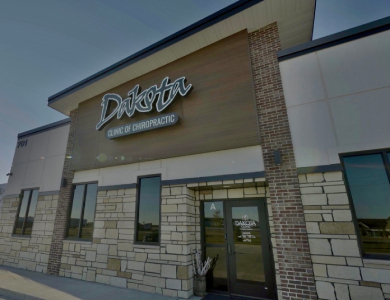
Dealing with persistent pain can be an arduous journey, one that often requires a multifaceted approach to find relief. In the realm of pain management, various techniques and therapies have emerged, each offering unique benefits and potential solutions. Among these, cold laser therapy and LED light therapy have gained significant traction as non-invasive, drug-free alternatives for managing chronic pain.
The Role of Cold Laser Therapy/LED Light Therapy in Pain Relief
Cold laser therapy, also known as low-level laser therapy (LLLT), and LED light therapy have emerged as promising modalities in the field of pain management. These non-invasive techniques utilize specific wavelengths of light to stimulate cellular processes and promote healing within the body.
Cold laser therapy employs low-intensity lasers that emit specific wavelengths of light, typically in the red and near-infrared range. These wavelengths are capable of penetrating deep into the tissues, stimulating cellular processes and promoting healing. LED light therapy, on the other hand, utilizes light-emitting diodes (LEDs) that emit specific wavelengths of light, often in the red, blue, or near-infrared range.
Both cold laser therapy and LED light therapy have been shown to have potential benefits in managing various types of pain, including:
- Reducing inflammation
- Promoting tissue repair and healing
- Increasing blood flow and oxygenation
- Stimulating the release of natural pain-relieving substances
By targeting these underlying mechanisms, these light-based therapies can provide relief for conditions such as:
- Musculoskeletal pain (e.g., back pain, neck pain, joint pain)
- Neuropathic pain (e.g., diabetic neuropathy, post-surgical pain)
- Arthritis-related pain
- Sports injuries
- Wound healing
How Cold Laser Therapy/LED Light Therapy Works to Relieve Pain
The mechanisms by which cold laser therapy and LED light therapy alleviate pain are rooted in the interaction between light and cellular processes. When the specific wavelengths of light used in these therapies penetrate the body's tissues, they are absorbed by photoreceptors within the cells.
This absorption of light energy triggers a cascade of physiological reactions, including:
- Increased ATP Production: The absorbed light energy stimulates the mitochondria, the powerhouses of cells, to produce more adenosine triphosphate (ATP), the primary energy currency for cellular processes.
- Modulation of Inflammatory Responses: The light energy can influence the release of various inflammatory mediators, such as cytokines and prostaglandins, thereby reducing inflammation and associated pain.
- Promotion of Tissue Repair: The increased cellular energy and modulation of inflammatory responses facilitate the repair and regeneration of damaged tissues, contributing to the overall healing process.
- Stimulation of Endorphin Release: Cold laser therapy and LED light therapy have been shown to stimulate the release of endorphins, the body's natural pain-relieving compounds, further contributing to pain reduction.
- Improved Blood Flow and Oxygenation: The light energy can stimulate the formation of new blood vessels (angiogenesis) and improve circulation, enhancing the delivery of oxygen and nutrients to the affected areas, supporting healing and reducing pain.
By targeting these cellular and physiological processes, cold laser therapy and LED light therapy can provide a comprehensive approach to pain management, addressing both the symptoms and underlying causes of pain.
How Often Should You Receive Therapy?
The frequency of cold laser therapy or LED light therapy sessions required for effective pain management can vary depending on several factors. While there is no universal guideline that fits every individual's needs, most healthcare professionals recommend a tailored approach based on the specific condition, severity of pain, and individual response to the therapy.
In general, it is common to begin with a more intensive treatment schedule, followed by a gradual reduction in frequency as pain levels decrease and healing progresses. Here are some general guidelines for the frequency of cold laser therapy or LED light therapy sessions:
- Acute Pain: For acute pain conditions, such as sports injuries or post-surgical pain, sessions may be scheduled more frequently, typically 2-3 times per week, during the initial stages of treatment.
- Chronic Pain: For chronic pain conditions, such as osteoarthritis or neuropathic pain, sessions may be scheduled 1-2 times per week initially, with the frequency adjusted based on the individual's response and progress.
- Maintenance Phase: Once significant pain relief has been achieved, maintenance sessions may be recommended on a less frequent basis, such as once every 2-4 weeks, to sustain the benefits and prevent pain recurrence.
It is important to note that the frequency of sessions may need to be adjusted based on the individual's response to the therapy, as well as any changes in the condition or pain levels. Regular communication with your healthcare provider is crucial to ensure that the treatment plan is optimized for your specific needs.
Schedule your Consultation with Dakota Clinic of Chiropractic Today
Determining the optimal frequency of cold laser therapy or LED light therapy sessions for pain management is a personalized process that requires careful consideration of various factors. While general guidelines provide a starting point, the ultimate frequency should be tailored to your individual needs, taking into account the severity and location of pain, overall health status, and response to the therapy.
If you're struggling with chronic pain and seeking a safe, non-invasive solution, consider exploring the potential benefits of cold laser therapy or LED light therapy. At Dakota Clinic of Chiropractic, our experienced team of healthcare professionals is dedicated to providing personalized pain management solutions tailored to your unique needs.
Schedule a consultation today to learn more about how these cutting-edge therapies can help you regain control over your pain and improve your overall quality of life, visit Dakota Clinic of Chiropractic at our office in West Fargo, North Dakota, or call (701) 566-5455 to book an appointment today.









